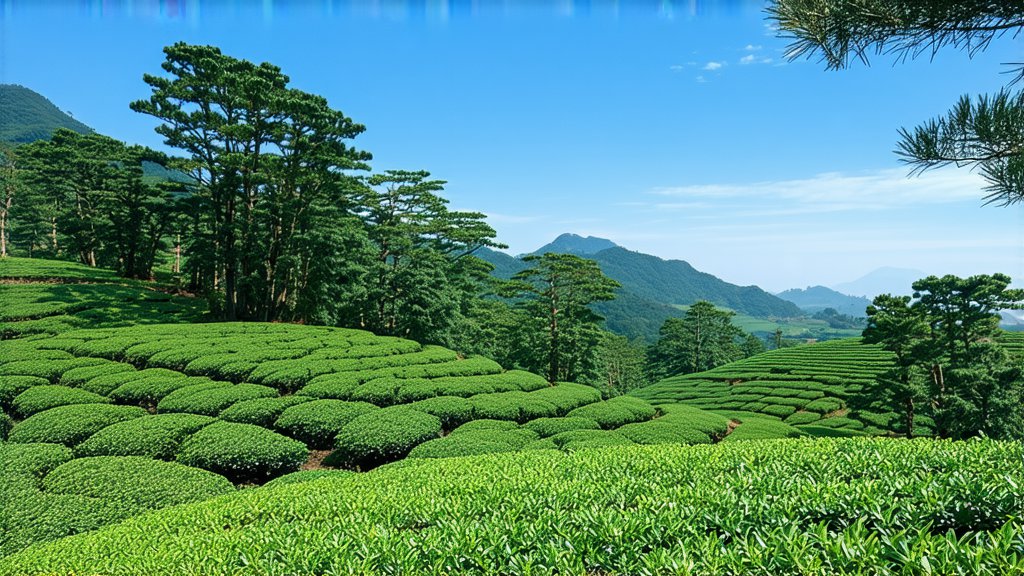
In the vast tapestry of global tea cultures, few varieties hold as much historical significance and cultural depth as Keemun Black Tea from China. This exquisite beverage, often referred to as "Qimen Hongcha" in Mandarin, stands as a testament to centuries of tea cultivation expertise and intricate processing techniques that have been passed down through generations. As we embark on this journey into the world of Keemun Black Tea, prepare to delve into its rich history, explore its diverse types, uncover the meticulous craftsmanship behind its production, and learn the art of appreciating its unique flavor profile.
A Glimpse into History
The origins of Keemun Black Tea trace back to the early Tang Dynasty (618-907 AD), making it one of the oldest known teas in China. However, it wasn't until the late 19th century that Keemun gained international recognition when a British tea merchant named Edward VII discovered its exceptional quality during his travels to Qimen County, Anhui Province. Enraptured by its distinct aroma and taste, he introduced it to the Western world, sparking a craze for this Chinese delicacy across Europe. Today, Keemun remains one of China's most celebrated black teas, cherished for its deep amber hue, smooth texture, and complex flavor notes.
Varieties of Keemun Black Tea
Keemun Black Tea encompasses several sub-varieties, each with its own unique characteristics and appeal. Among them, two stand out prominently:
-
Gongfu Keemun: Known for its smaller leaf size and more refined processing, Gongfu Keemun undergoes additional rolling and drying steps, resulting in a tea with a tighter pellet shape and a richer, fuller body. It offers a robust flavor profile with hints of caramel, dried fruits, and a subtle smokiness.
-
Xianren Keemun: This variety features larger leaves and a looser roll, giving it a more open appearance. Xianren Keemun is prized for its delicate balance between strength and sweetness, with notes of orchid, honey, and a lingering aftertaste that leaves a lasting impression on the palate.
Both varieties share a common thread of excellence, reflecting the terroir of Qimen County's high-altitude mountains, fertile soil, and favorable climate conditions that contribute to the tea's distinctive character.
Crafting the Perfect Brew: The Art of Keemun Production
The creation of Keemun Black Tea is an art form that requires precision, patience, and a deep understanding of nature's rhythms. The process begins in the spring when skilled tea farmers handpick only the youngest, most tender shoots and leaves from the Camellia sinensis var. assamica bushes. These are then carefully sorted to ensure uniformity in size and quality.
Next comes the crucial stage of withering, where the freshly harvested leaves are spread out in bamboo trays under direct sunlight or gentle indoor heat. This step reduces moisture content while initiating enzymatic reactions that transform the green leaves into their characteristic black hue. Following withering, the leaves undergo a series of rolling sessions to release further moisture and break down cell walls, allowing essential oils to permeate throughout the leaf.
Oxidation, or fermentation, follows, where the rolled leaves are spread out to allow controlled exposure to oxygen. This process deepens the tea's color and develops complex flavors. Once the desired level of oxidation is achieved, the leaves are fired in large woks or drums to halt oxidation and fix the tea's final flavor profile. Finally, sorting and grading take place, separating the leaves based on size and quality before packaging for distribution.
Savoring the Essence: Tasting Keemun Black Tea
To truly appreciate Keemun Black Tea, one must engage in the traditional Chinese tea ceremony—a ritualistic practice that emphasizes mindfulness and respect for the tea's journey from leaf to cup. Begin by selecting a high-quality Keemun, preferably loose leaf rather than bagged, to fully experience its nuances. Use water heated to approximately 95°C (203°F) and steep the tea for 3-5 minutes, depending on personal preference for strength.
As you raise your cup, take note of the tea's enticing aroma—a blend of floral, fruity, and malty scents that promise a sensory adventure. Sip slowly, allowing the tea to coat your tongue and savor its multifaceted flavors. Notice the initial burst of sweetness followed by a gentle bitterness that fades into a smooth, lingering finish. Pay attention to the tea's mouthfeel—its velvety texture and how it warms your throat as you swallow.
For an authentic tasting experience, pair Keemun Black Tea with traditional Chinese snacks such as mooncakes or almond cookies, which complement its flavors without overpowering them. Alternatively, enjoy it alongside light pastries or fresh fruit for a delightful contrast.
Conclusion
Keemun Black Tea embodies the essence of Chinese tea culture—a harmonious blend of tradition, innovation, and a profound connection to nature. Its storied history, diverse varieties, meticulous craftsmanship, and unparalleled flavor profile make it a treasure worth discovering for any tea enthusiast. By immersing yourself in the world of Keemun, you not only indulge in a delicious beverage but also partake in a centuries-old tradition that celebrates the artistry and wisdom of tea making. So, brew yourself a pot, sit back, relax, and let the enchanting tale of Keemun unfold in every sip.